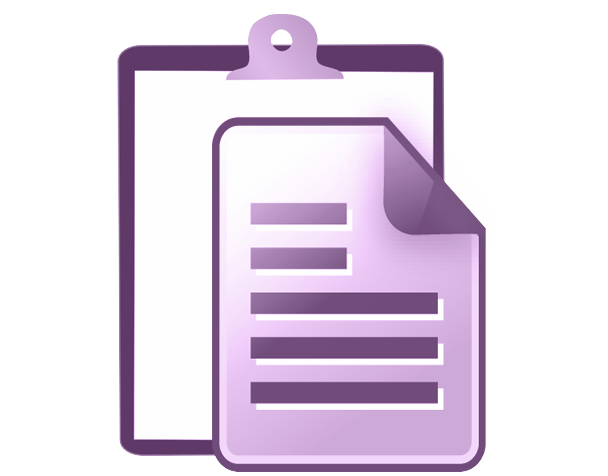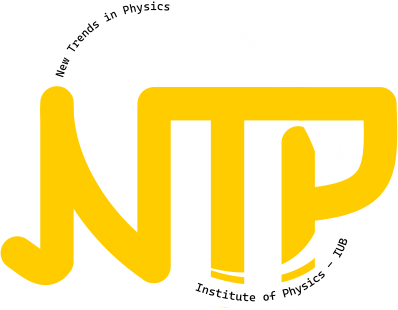Author Guidelines
|
Manuscripts submitted for initial consideration must adhere to these standards: |
|
| Acceptable Softwares and File Designations |
|---|
See the list of acceptable softwares and appropriate File Designations to be sure your file types are compatible with NTP.
| Cover Letter |
|---|
It is essential to include a cover letter with each manuscript submission. Throughout the submission process, you can either type the cover letter directly into the submission system, paste it, or attach it as a separate file. Your communication should be in the English language.
Each original submission requires an accompanying cover letter. Essential details to include in the cover letter are:
- Title of the submission.
- Name of the corresponding author, along with their title, affiliation, and institute e-mail address.
- A brief synopsis of the article.
- For resubmissions, provide a detailed point-by-point response to reviewer comments.
Throughout the evaluation process, all editorial correspondence regarding the manuscript's receipt, status, review, revision, and publication will exclusively be directed to the designated corresponding author. It is the corresponding author's responsibility to keep all co-authors informed about the manuscript's status and to secure their agreement for any substantial changes in content or interpretation made during the revision process.
| Manuscript Text Components |
|---|
Ensure that your submission includes a list of sections or components tailored to the requirements of the journal. Provide descriptions where necessary. The manuscript should contain the following elements: Title, Author List, Abstract, Keywords, Main Text (comprising Introduction, Experimental, Results, and Discussion/Conclusion), Acknowledgement, and References. Note that references, when submitted, must adhere to the Review-Ready Submission requirements, and any graphics should be included in a separate section.
Title: selection is a critical aspect of paper presentation. Titles should succinctly convey the paper's emphasis and content in a way that is easily understandable to a wide audience. As a primary tool for current awareness and information retrieval, titles offer readers the initial insight into the article's purpose. Authors are advised against using uncommon abbreviations in titles. Additionally, it is suggested that titles be kept within a length of 15 words to optimize clarity and effectiveness.
Author List: When compiling the author list, ensure the inclusion of individuals who have made significant contributions to the work. For effective indexing, retrieval, and unique author identification, employ a format that includes first names, initials, and surnames (e.g., Katherine M. Jones) or first initials, second names, and surnames (e.g., K. Mary Jones). Designate at least one author with an asterisk to indicate the individual to whom correspondence should be addressed.
Institution Address: The institutionaddress(es) provided should correspond to the institution(s) where the research was carried out. If an author's current address differs from the location where the work was conducted, please include the present address in an Author Information note.
Abstract: Every Research Article is required to include an abstract along with an Abstract (TOC) graphic. The abstract should concisely articulate the research's purpose and offer a brief, informative summary of the key findings and conclusions. It's important to note that pasting the abstract in the text box on the Web submission page does not eliminate the necessity of including the abstract within the manuscript document.
Introduction: in the introduction section, clearly articulate the research's purpose and contextualize it within the earlier work in the field. Aim for brevity in presenting this information.
| Manuscript Types |
|---|
NTP publishes original Research Articles, Perspectives, Mini-Reviews and Reviews. Submissions are based on original work not previously published.
Research Articles:The journal invites submissions of original research featuring physics connections. Submitted research should either be hypothesis-driven or contribute to the formation of a hypothesis. There is no prescribed minimum length for original submissions. In the context of NTP, content traditionally classified as letters, rapid communications, or full articles all fall under the umbrella of Research Articles. Authors are urged to present their findings in a concise and accurate manner. NTP is open to publishing Research Articles that encompass negative results. Such articles should comprise three essential elements: a valid hypothesis aimed at addressing a pertinent scientific question, scientifically rigorous research, and results that, while negating the initial hypothesis, hold significance for researchers in the field or may lead to the formulation of a new hypothesis.
Perspectives: are peer-reviewed reports that illuminate a burgeoning topic of widespread interest. These reports do not aim to provide an exhaustive exploration of the field; rather, their purpose is to contextualize a specific research finding within a broader framework. The focus should lean towards the prospective aspects of an emerging topic, prioritizing future outlook over a historical survey. Perspectives must encompass an abstract, a suitable number of references, a table of contents/abstract graphic, and a dedicated Future Outlook section. Authors contributing to Perspectives are strongly encouraged to supplement their submission with a 3-5 minute video clip that highlights the thematic essence of their Perspective. While Perspectives are typically solicited by the Editors, authors with an interest in submitting a Perspective should reach out to the journal before initiating manuscript preparation and submission to secure conditional approval for their proposed topic.
Mini-Review: Articles provide short overviews of the latest advancements in a specific area. These articles are concise, typically spanning around 20 single-column A4 pages with 1.5 line spacing, excluding figures and references. The reference list should be limited to 25-30 entries. Essential components of Mini-Reviews include an Abstract, a Table of Contents (TOC) graphic, and a section dedicated to Future Outlook. Authors are encouraged to furnish a brief biography. These articles are particularly sought after in Physics. We also extend a warm invitation for Mini Reviews addressing emerging techniques, tools, cell assays, novel analytical methods, computational approaches, and related subjects.
Review articles: in this journal are brief yet comprehensive examinations of the literature, crafted by specialists to cater to a non-expert audience. Their objective is to familiarize the journal's readership with recent advancements in critical research domains, spanning interdisciplinary areas. These articles are tailored for a broader readership, aiming to present a well-rounded perspective on the discussed subject. While focusing extensively (or exclusively) on the author's research is discouraged, reviews are expected to be within a limit of 50 pages when the text is double-spaced, encompassing tables, figures, and references. In addition to providing an Abstract and a Table of Contents (TOC) graphic, reviews should articulate the challenges and opportunities that lie on the horizon.
| Research Data Policy |
|---|
The Journal (NTP) strongly encourage authors to make the research data underlying their articles publicly available at the time of publication.
Research data is defined as materials and information used in the experiments that enable the validation of the conclusions drawn in the article, including primary data produced by the authors for the study being reported, secondary data reused or analyzed by the authors for the study, and any other materials necessary to reproduce or replicate the results.
A well-written paper helps share your results most clearly. English Editing Service is designed to help scientists communicate their research effectively. Our paid subject-matter expert editors will edit your manuscript for grammar, spelling, and other language errors so your ideas are presented at their best.
| Preparing Graphics |
|---|
The quality of illustrations in NTP journal depends on the quality of the original files provided by the authors. Figures are not modified or enhanced by journal production staff. All graphics must be prepared and submitted in digital format. Graphics should be inserted into the main body whenever possible. Please see Graphics Preparation for additional information. Any graphic (figure chart, scheme, or equation) that has appeared in an earlier publication should include a credit line citing the original source. Authors are responsible for obtaining written permission to re-use this material.
| Preparing For Submission |
|---|
Manuscripts, graphics, supporting information, and required forms, as well as manuscript revisions, must all be submitted in digital format through NTP log in. Registering for an NTP ID is fast, free, and does not require NTP membership.
| Safety Considerations |
|---|
Authors must emphasize any unexpected, new, and/or significant hazards or risks associated with the reported work. This information should be in the Experimental Section of a full article and included in the main text of a letter.
| Conflict of Interest Disclosure |
|---|
A statement describing any financial conflicts of interest or lack thereof is published journal article. During the submission process, the Corresponding Author must provide a statement on behalf of all authors of the manuscript, describing all potential sources of bias, including affiliations, funding sources, and financial or management relationships, that may constitute conflicts of interest. If the manuscript is accepted, the statement will be published in the final article.
If the manuscript is accepted and no conflict of interest has been declared, the following statement will be published in the final article: “The authors declare no competing financial interest.”
| Plagiarism |
|---|
In publishing only original research, NTP is committed to deterring plagiarism, including self-plagiarism. NTP Publication uses Turnitin software to screen submitted manuscripts for similarity to published material. Note that your manuscript may be screened during the submission process.
| Authorship, Author List, and Coauthor Notification |
|---|
Authors are required to obtain the consent of all their coauthors prior to submitting a manuscript. The submitting author accepts the responsibility of notifying all coauthors that the manuscript is being submitted.
During manuscript submission, the submitting author must provide contact information (full name, email address, institutional affiliation, and mailing address) for all of the coauthors. Because all of the author names are automatically imported into the electronic Journal Publishing Agreement. Author affiliation should reflect where the work was completed, even if the author has since left that institution. Authors may include a note with a current address if their institution has changed since the work was completed.
If any change in authorship is necessary after a manuscript has been submitted, confirmation is required that all of the authors (including those being added or removed) have been notified and have agreed to the change. To provide this confirmation, authors are asked to complete and sign an authorship change form and provide the completed form to the appropriate editorial office.


 Citation Guide
Citation Guide Submission Guide
Submission Guide Bibtex Guide
Bibtex Guide
